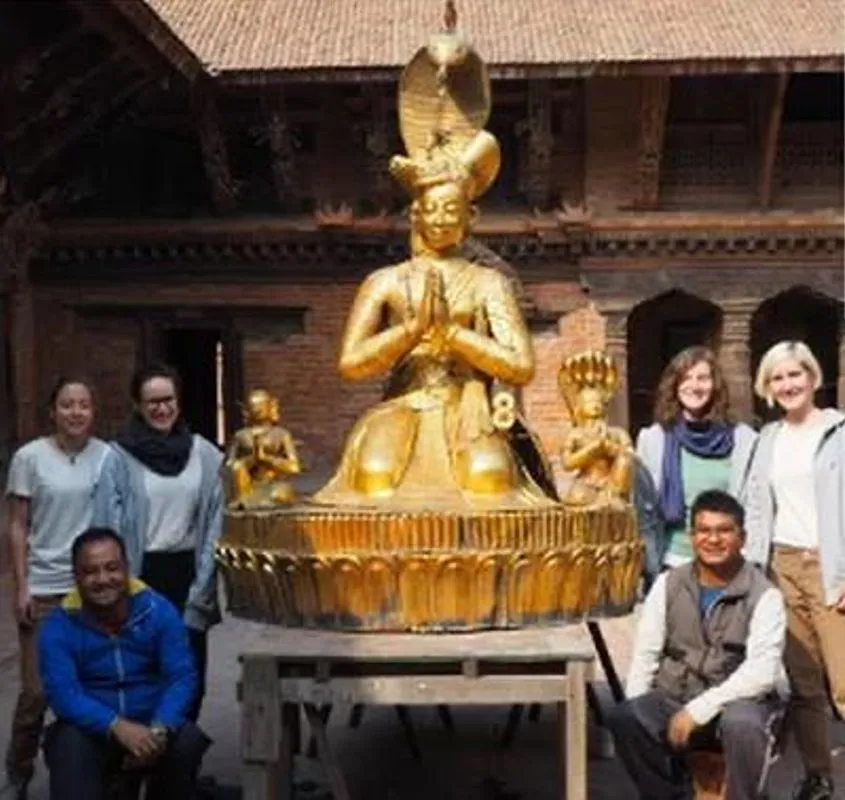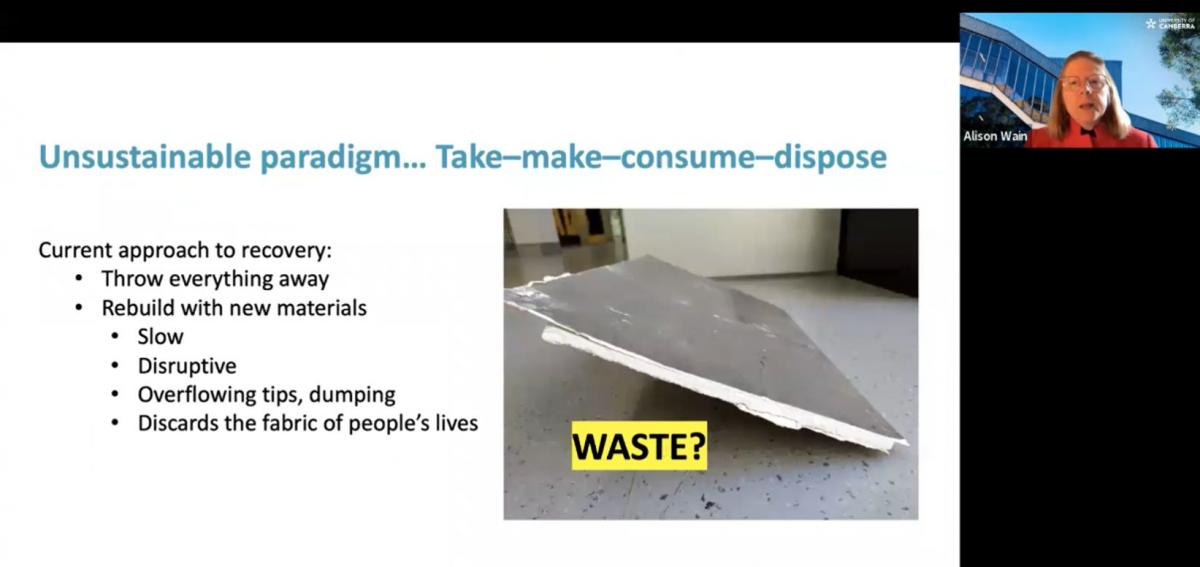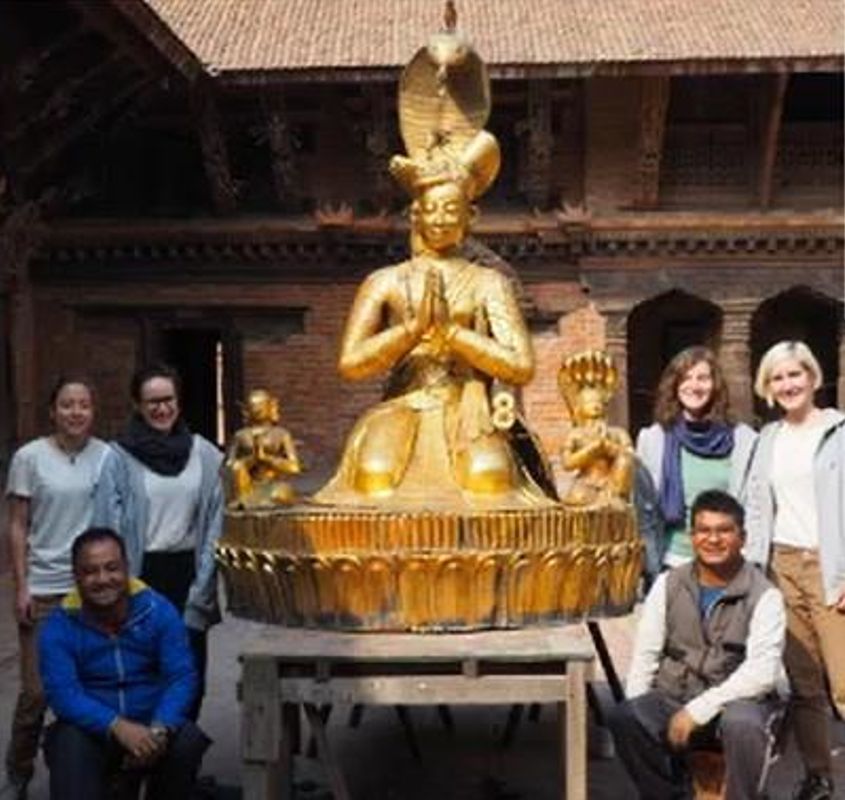Regional Live Hub 1 (Europe)
Submitted by sharragrow on 06 Sep 2022

Ana Rota and Jelena Zagora
Monday, REGIONAL LIVE HUB (1) and Special Session: Showcase of selected posters, shortlisted Keck Award nominations and regional networking
During the very first day of Congress the attendees had the opportunity to discuss papers and posters, shown in the technical sessions, that are in several ways relevant to the European region.
The session started with addressing the uneasy subject of post-disaster aftermath and recovery. Alison Wain presented the potential of conservation laser cleaning of soot deposits within the surviving parts of house interiors in Australian bushfire-ravaged areas–a sustainable and promising option for post-disaster wellbeing and waste reduction. Helping restore the fabric of people’s lives instead of tearing down and discarding pieces of their homes is such a noble and forward-looking conservation concept, enriching and widening the notion and scope of cultural heritage to comprise ordinary life values and personal spaces. Questions from the audience were mainly focused on prices, affordability and funding options for using this method. The authors are aware that there is still a lot of research to be done in order to develop systems and to estimate the viability of conservation laser cleaning of soot deposits in house interiors, which will focus on the practicality of this inspiring concept.

Next… we have feasted our eyes on the once-again bright colours of the National Trust’s largest tapestry set, depicting the Story of Gideon and decorating the long gallery of Hardwick Hall (UK), whose 25-years conservation project has been brilliantly illustrated by conservators Elaine Owers and Maria Jordan.
We then left Europe again and stopped at the University of Delaware (US), where Joelle D. J. Wickens and Anisha Gupta led us through a meaningful overview on power, leadership and inclusion of minorities in the elite field of art conservation in the US – a useful matter of reflection for European conservators too.
In the shadow of the snow-capped Himalayan peaks, Martina Haselberger led the conservation project of the living heritage site of Patan Durbar Square in Kathmandu (Nepal), sharing with us her experience in dealing with spiritual and social values while conserving a religious site–a circumstance that requires a thoughtful and mindful approach to which European conservators can relate. These papers raised many thoughts and questions, later brilliantly discussed during the Q&A Session.

And finally… who said that art conservation is all about meticulous and repetitive tasks? As Claire Fry and Victoria Marsland pointed out, requests for filming at historic properties is increasingly growing in England, along with the need for conservators present on set to minimise the risks of damage.
The difficulties related to this apparently glamourous work environment and the various skills required were outlined by Anna Barnes and Charlotte Tomlin. But the collaboration between the filming industry and heritage conservation proves to have beneficial effects for both parties, providing extra income for the historical residencies and better-than-average work conditions for film crews. The opportunity to raise filming crews’ awareness of environmental sustainability is also a positive side effect. This paper gave us the opportunity to discover an unexpected way to put art conservators’ skills at the service of our communities. The positive comments and questions were easy evidence that the paper to has aroused a strong interest among the attendees.
The short poster session attached to the European Regional Hub showcased various subjects related to decision-making, green conservation, sustainability and conservation research. Posters will also be presented in two larger Poster Sessions (A and B) which all are invited to join.
A selection of Keck Award nominees showed very different, but equally interesting projects. Matthew Read launched the Open Clock Club project during the pandemic lockdown, sharing his knowledge and passion for clock repair with a wide public.
The vivid colours and sinuous lines of Almeda Negreiro’s mural paintings in Lisbon are the core of a stimulating on-going project of conservation, research and communication. This last aspect, the public outreach of the work of art and of the conservation work, is sometimes unjustly neglected but, as Milene Gil highlights, they are actually closely linked to the safeguard of the work of art itself.
Image Captions:
Image 1 - Screen shot of the conservation work described in “Applied Conservation Practice within a Living Heritage site”. Image taken by Anna Rota from European Live Hub.
Image 2 - Screen shot of the presentation by Alison Wain, “Hearts and Homes: the Potential of Conservation Laser Cleaning for Post-disaster Wellbeing and Waste Reduction”. Image taken by Jelena Zagora from European Live Hub.
Post Authors:
Anna Rota is currently working as paintings conservator in France and Belgium.
Jelena Zagora is a paintings conservator at the Croatian Conservation Institute.